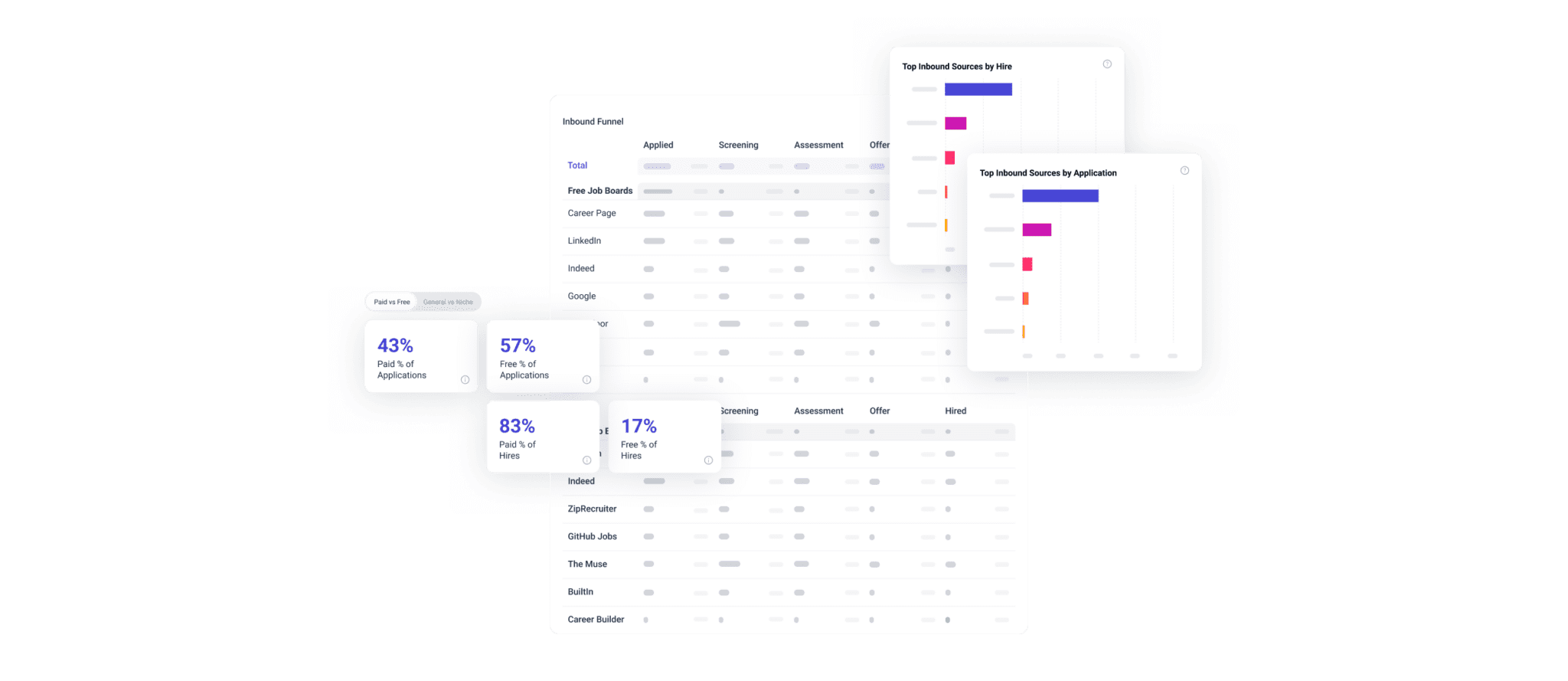A job post, or job description, is a foundational recruiting tool for hiring teams. However, that doesn’t mean it’s a straightforward document that’s easy to get right. (The sheer variety of approaches that hiring teams take makes that abundantly clear.) For many teams, there are gray areas in job description language. One such gray area is job responsibilities versus job requirements.
Both are necessary for a great job post. (Note: Job posts are external documents used to advertise open positions, as opposed to internal job descriptions.) Job responsibilities are the functions an employee has to perform to succeed in the position. Job requirements are the skills, education, certifications, or other ‘qualifications’ an employee needs to (already) possess to perform those job responsibilities.
First, establish job responsibilities
When writing a job post, clearly define the position first. (A well-designed intake meeting is crucial to establishing this clarity early on and securing alignment among the hiring team.) What role does this position play within the company? And what are the specific tasks someone in the position will perform on a daily basis?
Be as specific as you can with the limited space you have on a job post. Whenever possible, list the various tasks rather than grouping them under an umbrella responsibility. If you’re hiring a social media manager, for example, don’t give vague, overarching tasks (e.g., ‘manage social media strategy’). Instead, list the platforms your company uses and the specific goals you have for each of those platforms (e.g., ‘increase following on Twitter’).
With clear, specific responsibilities laid out, you can then turn to the skills someone needs to perform those responsibilities. If the responsibilities are comprehensive, you should get a clear view of all of the skills someone needs to be considered for the job. Simply list those skills as your requirements. And keep your list to only those requirements someone needs (e.g., skip any unnecessary education requirements).
Second, align job requirements with responsibilities
Much of the confusion arising from unclear job posts comes from unclear or misaligned job requirements and responsibilities. Simply put, your requirements should match your responsibilities so the position is clear to any qualified job seeker.
Take soft skills, for example. Soft skills are generic requirements that hiring teams have long turned to for filling out their job posts. These include requirements like ‘communication skills,’ ‘work ethic,’ and ‘integrity.’
On the surface, these may seem like reasonable requirements. The problem, however, is that they’re too vague and subjective for job seekers to take anything concrete from them. Soft skills, in general, often turn away qualified job seekers. (And the fewer qualified applicants you attract, the less efficient your entire hiring process becomes.) For example, a qualified job seeker may not apply because they assume ‘excellent communication skills’ means ‘good at public speaking’ (it may not, but who really knows).
Preferred requirements are also problematic. When job responsibilities are clear, there’s no need to list two sets of requirements. If you do, qualified job seekers may not apply because they assume the preferred qualifications are the ones they really need.
This is particularly important when striving for a diverse candidate pipeline and equitable, efficient hiring process. Datapeople research on the confidence gap shows that job ads that include
preferred qualifications actually see 40% smaller qualified candidate pools than job posts
with only must-have requirements. (To measure this, we looked at candidates who made it
to the phone screen stage.) Nice-to-haves also attract 40% smaller female applicant pools
than must-haves, illustrating their negative impact on top-of-funnel gender diversity.
Responsibilities versus requirements: different functions, equal importance
The takeaway? Your job post should have a clearly defined set of responsibilities and clearly defined set of requirements. And it should include a single set of job requirements that match the single set of responsibilities. If you need some inspiration, here’s an example of a job post from our customer Conagra with a perfect list of qualifications.
Here at Datapeople, we’ve spent years researching what makes job posts work, and learned that the most effective ones are no accident. We’ve also learned that while this intentionality isn’t always easy, it’s worth it. Smart job posts have an outsized impact on the efficiency, fairness, and success of your overall hiring process.
We’ve compiled a number of data-backed best practices – informed by our analyses of over 65 million job ads and millions of hiring outcomes – into a free checklist that you can share with all the recruiters and hiring managers in your organization. Download it now to systematically improve job ads (and hiring success) across your business.







